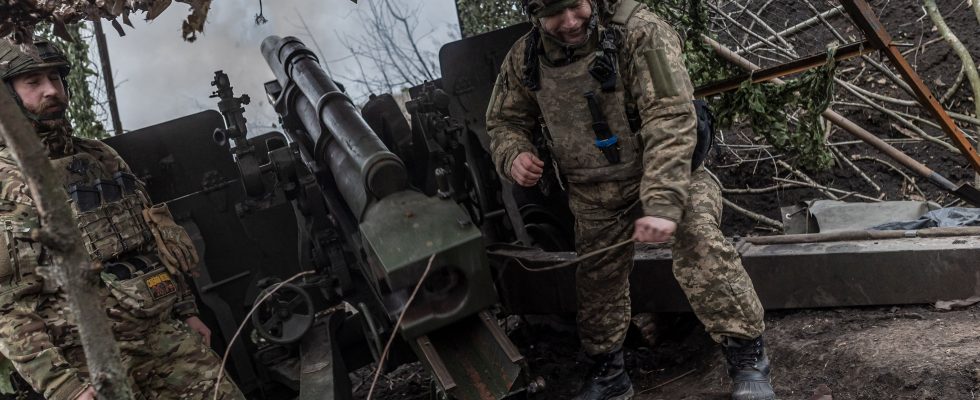“One of the biggest tank massacres in Russia’s 25-month war in Ukraine.” This is not an objective or even a dream of the Ukrainian general staff, but rather the fiasco of a Russian offensive this Saturday around the town of Avdiivka, described by the American magazine Forbes. This weekend, the Russian army attempted a breakthrough near the small village of Tonenke, in eastern Ukraine, in the Donetsk oblast. A region where it has claimed several victories and small gains in recent weeks.
While the last operations were mainly carried out by ground troops, for this one, significant material resources were deployed: 36 tanks and 12 BMP infantry combat vehicles, for a total of 48 armored vehicles. A large-scale operation, of “significant” importance, in the words of the American think tank Institute for the Study of War (ISW), the reference in daily monitoring of the front.
According to these analysts, the Russian army had “not carried out a mechanized assault of this magnitude since the start of the Russian offensive aimed at seizing Avdiivka at the end of October 2023” . Enough to even make some see that it was “the largest assault of this type since the start of the conflict in Ukraine, led by a column of 48 Russian armored vehicles”, as reported by the American magazine The War Zone.
But the Ukrainian army very quickly destroyed any Russian desire for a territorial breakthrough. Kiev troops thus claimed responsibility for the destruction of 12 tanks and eight infantry vehicles, or nearly a third of the Russian military resources mobilized. Various videos broadcast show Russian vehicles being blown up one by one by the Ukrainian defense. And above all, without any real territorial progression, as the ISW asserts. Ukrainian forces were quick to mock this failed operation by the Russian army. “Sometimes it’s amazing how much stupid, brainless flesh dies en masse because of the ambitions of one little man,” the largely involved Ukrainian 25th Airborne Brigade shared on its social media.
A new combat technique
This military success, while it obviously does not upset the balance of the front, remains an important marker of the new military strategy of the Kiev army. Forced to retreat to compensate for weakening Western aid, having to hastily rebuild a defense line to cut short the Kremlin troops’ ambitions for breakthroughs, the Kiev army had to quickly adapt. And the destruction of these 20 armored vehicles is one of the symbols, by a new operating mode.
The Ukrainian army thus seeks first of all to strike Russian armored vehicles with its artillery battery, not only to destroy enemy targets, but also and above all in order to disperse enemy vehicles. The armored vehicles still moving, separated, then become preferred targets for less expensive weapons, notably FPV suicide drones (for “first-person view”)., or “subjective view”), but also soldiers equipped with anti-tank weapons, such as Javelins.
So, as explained Forbes“whereas previously a Ukrainian artillery battery could fire up to 10 rounds to defeat a Russian assault group, it now fires only five and coordinates with nearby FPV operators to complete the Russian forces.
Because on the contrary, these FPV drones, these “small civil racing drones very fast and very maneuverable, which have been modified to be able to transport explosives”, as reminded The Express Yohann Michel, researcher on defense issues at the International Institute for Strategic Studies (IISS), have the advantage of only costing between 500 and 1,000 euros depending on the model compared to… around 8,000 euros for a shell of 155mm.
A small victory, but one that brings hope?
This Russian debacle can in any case bring hope for Ukraine, while the fear of a large-scale Russian offensive in the coming months is on everyone’s minds. “Ukraine’s ability to defend itself against the March 30 assault, particularly near Avdiivka, is a positive indicator of Ukraine’s ability to defend itself against future large-scale Russian assaults, and l “Russian operation planned for the summer of 2024”, states the Institute for the Study of War. It also proves in particular that Ukrainian forces have the capacity to achieve significant success on the battlefield, but only “if they are properly equipped”, continues the American think tank.
Enough to turn all eyes towards Western aid, which could see a small increase in the coming months. The planned purchase of nearly 1.5 million shells, under the aegis of the Czech Republic, could thus greatly increase Ukrainian capabilities to hold their line of defense. The new delivery of weapons from France to kyiv, including “hundreds” of old but still functional armored vehicles, also goes in this direction.
On the Russian side, on the other hand, these significant material losses are obviously reminiscent of the numerous military debacles suffered by Moscow’s army since the start of its offensive in Ukraine. And once again raises questions about the chosen strategy. As reported by the ISW, an influential Russian military blogger, with nearly 400,000 subscribers on Telegram, has once again attacked the Russian military command, judging it to be much more obsessed with the advancement of their careers than with military objectives. “The problem is that when the main motivation is a leader’s dream of rank, everything else, including saving people, takes a back seat.”
